April 11, 2025 Soil Moisture, Condition Monitoring and Drought Update
April 11, 2025 Soil Moisture, Condition Monitoring and Drought Update
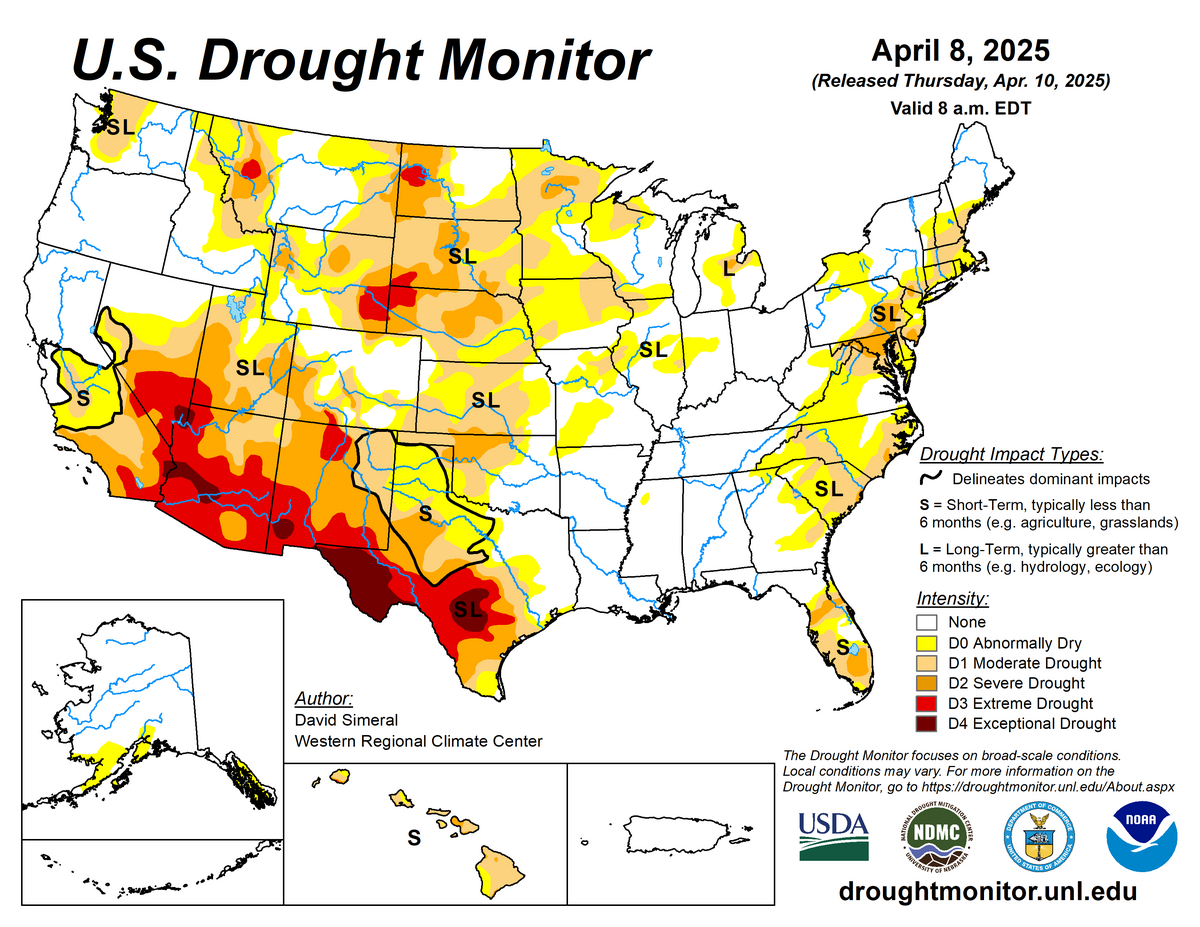
Widespread dry and drought conditions over much of the US with extreme to exceptional drought in parts of southern California, southern Nevada, Arizona, southern New Mexico, southwest Texas, Montana, Wyoming, western North Dakota, southwest South Dakota, and western Nebraska. Continued drought relief in the southern and middle Mississippi valleys and the Ohio valley with no drought or dry conditions in Ohio for the first time in many months.
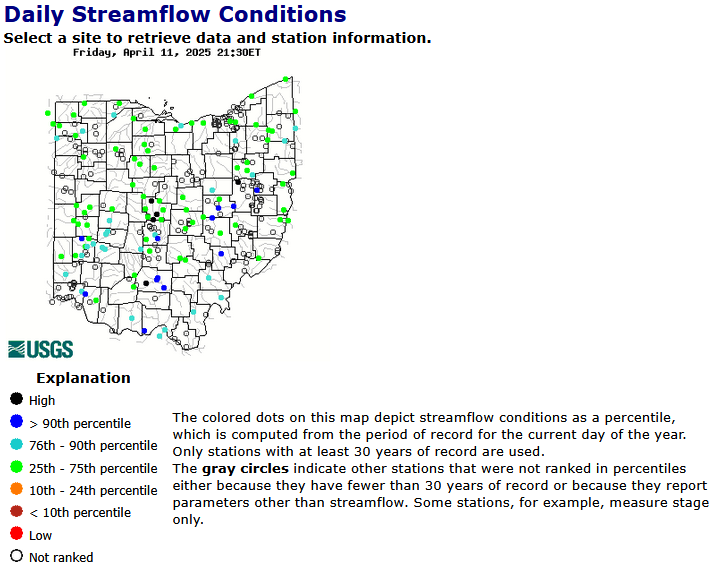
Condition Monitoring Report
Station Number: OH-HM-24
Station Name: Cheviot 3.4 W
Report Date: 4/12/2025
Submitted: 4/12/2025 7:32 AM
Scale Bar: Severely Wet
Description:
2.64 inches of rain in the past week and 5.15 inches of rain in the first 12 days of April. Soils are totally saturated with standing water and mud in swales. Rivers and streams are beginning to recede back into their banks after some of the worst flooding in over a decade. Parts of my yard are still so muddy and soupy in it difficult to walk in it. Grass is growing rapidly but some is quite stunted in swales, presumably due to lack of oxygen in the soil root system. Lots of clean up to be done in flood zones.
Categories: General Awareness
Agriculture
Business & Industry
Plants & Wildlife
Relief, Response & Restrictions
Society & Public Health
Water Supply & Quality

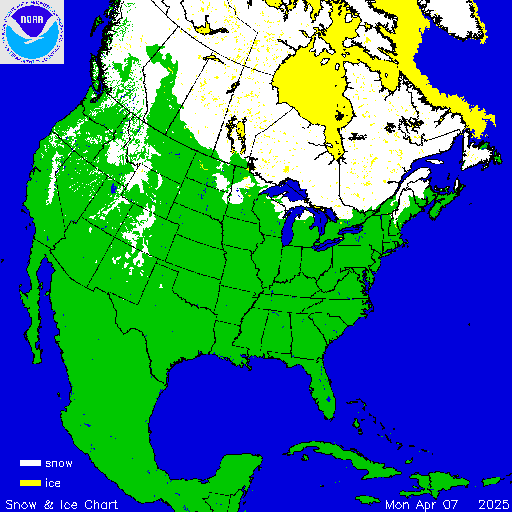
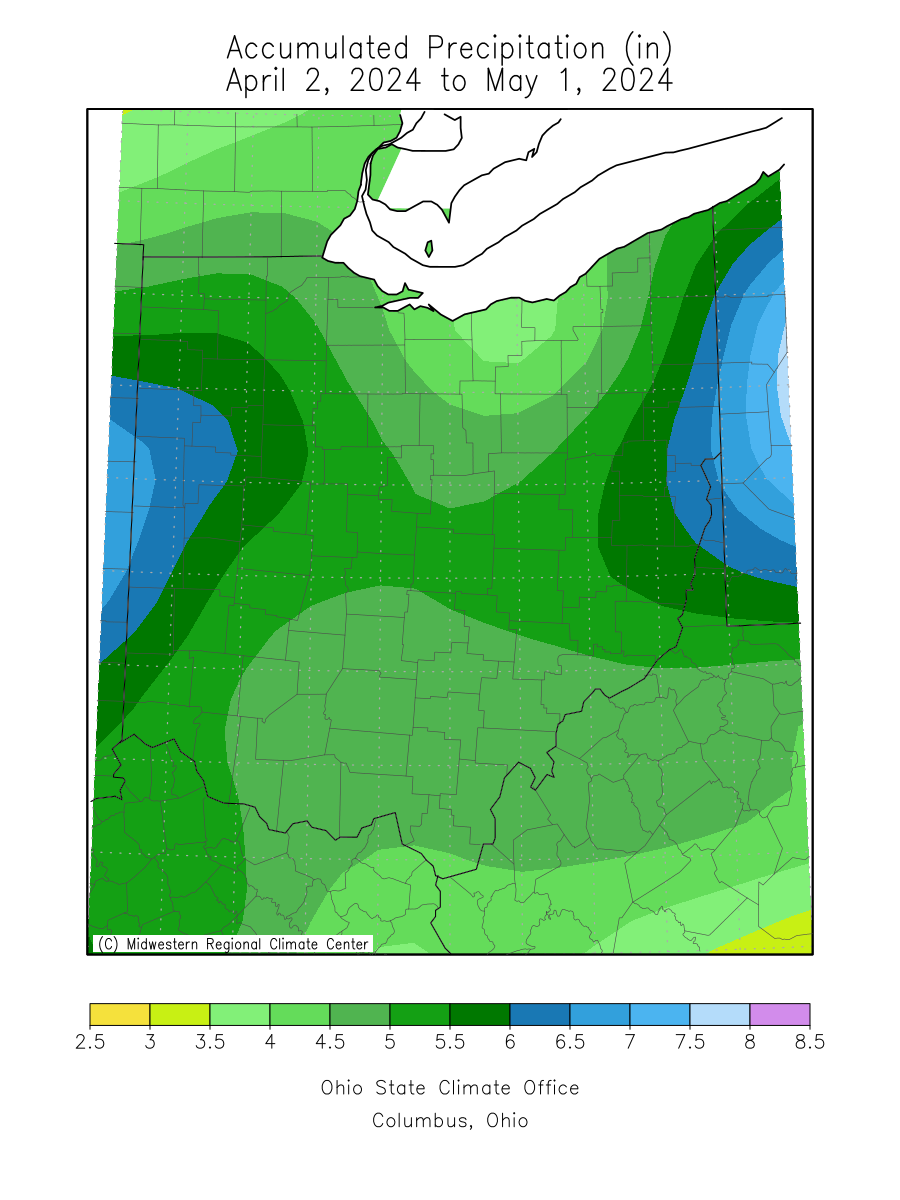
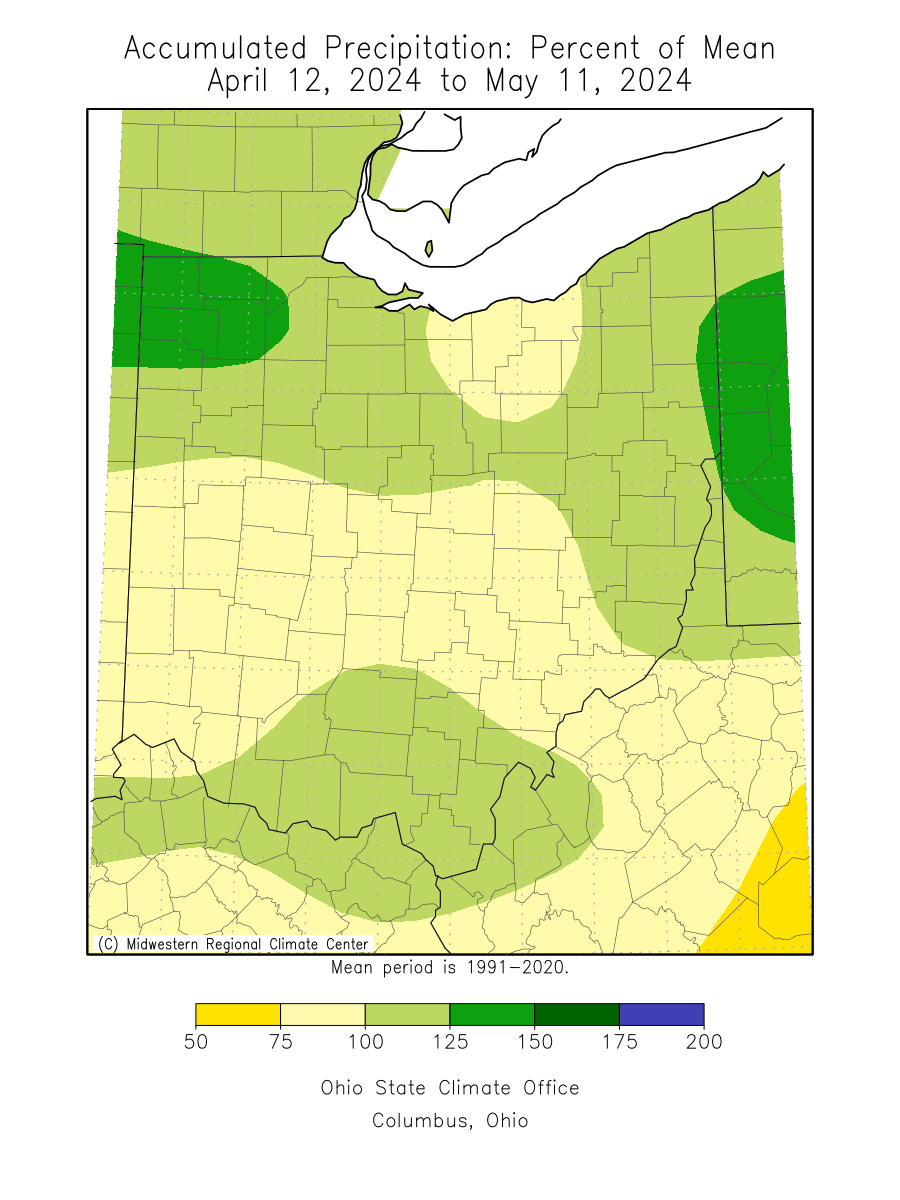
Other Drought links:
- NWS Drought Fact Sheet
- North American Drought Monitor (NADM)
- National Integrated Drought Information System (NIDIS)
- National Drought Mitigation Center (NDMC)
- National drought summary>>>
Please remember to water…correctly!
Water once per week, one inch per week, under the entire branch spread, in the absence of rain, May through November. Either rainfall or your watering should equal the one inch per week. Do not water if the soil is already moist. Put out a sprinkler and a straight sided soup can or rain gauge and measure one inch per week. Measure the rainfall which falls in your yard. Your trees don’t care what fell at the airport!
If burlap was left on new trees, it will repel water and the tree or shrub may die. Be sure burlap and twine are removed from the top of all root balls. If your landscaper disagrees, refer him or her to the American National Standards Institute (ANSI) industry standard for installation of landscape plants.
To the extent possible recycle fallen leaves back into the soil around the trees and maintain mulch around the trees to a radius of at least 3-5 feet. Keep mulch off trunks. Use a coarse textured mulch. Avoid triple shredded mulch. Aged arborist wood chips ( https://getchipdrop.com/ ), mulched and composted leaves, pine bark, and pine straw are all good. Very finely ground mulches such as triple ground hardwood mulch are not beneficial and may inhibit moisture and oxygen exchange.
Drought: How Dry Seasons Affect Woody Plants>>>



Soil temperature map
Soil temperatures across the US.







